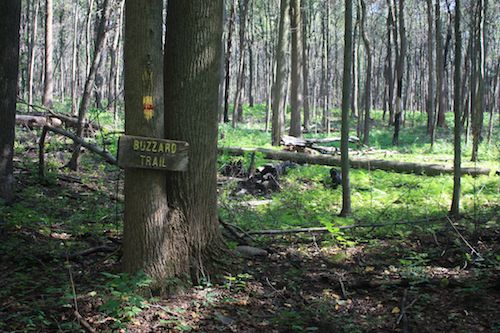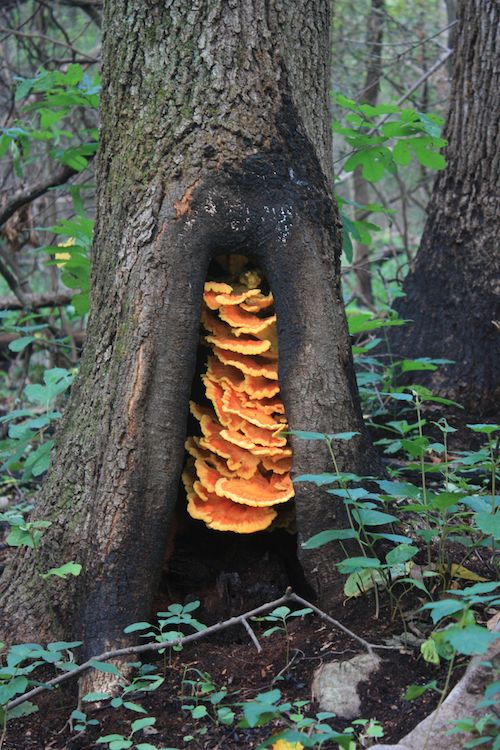Crow’s Nest: The Hopewell Fire after five months
This weekend I persuaded the family to hike up into the burned area of French Creek State Park again. Actually, it didn’t take much convincing: Denise and Owen love to hike too.
In August I had noticed a spotting of dying or early turning trees appearing on the far ridge in French Creek State Park and wondered what species of trees was affected. This photo was taken from Northside Road; the foreground ridge is in Crow’s Nest Preserve (which didn’t burn) and the far one is Chestnut Hill in French Creek State Park.

After walking across that ridge I still can’t say for sure, though the trees today (a month after this photo) that show the most early fall color are red maples—a species not considered fire tolerant. But there were also plenty of dead oaks, probably ones that had been stressed by gypsy moths, and beech trees also suffered mortality—but there aren’t too many of them up there.
Here’s a quick review of one location in the forest: this photo was taken on day five of the fire, April 13, 2012, while we were doing mop-up along this line. It’s where you approach the Buzzard Trail from below, coming in from Hopewell Road (and where the ever-full trash can is located).

Here’s the same spot on June 17:

And then on September 9, a sunnier day and a couple hours later in the afternoon:

You can see that the ground had greened up in just two months and is even more lush now. But the mid-story shrubs and small trees are absent. These will take a few years to be replaced.

Other parts of the forest exhibit the heavy fern cover associated with historic heavy deer browse (above). Successful recruitment of new trees will depend on the deer population remaining low.

Only in patches is the canopy opened up this much, places where trees had already been damaged by insects before the fire. The understory paw paw thickets (Asimina triloba) at the top of the hill are pretty much gone, at least for now.

The ground layer is dominated by ferns, raspberry thickets, pokeweed, and Japanese stiltgrass. This last (Microstegium vimineum) has been present along the trail edges for several years but the disturbance of the fire may help it spread. Parts of the trail are growing closed with it, in some places three feet tall—definitely more overgrown than in past years. There are also isolated spots of mile-a-minute (Persicaria perfoliata) that I had never seen in these deep woods before.
An exciting moment on our hike was when Denise whispered, “Freeze, and then turn around quietly. There’s an owl directly behind you.” This may be the first great-horned owl I’ve seen in the wild, pretty close considering we had a chattering four-year-old with us.

We also saw this sulphur shelf fungus growing in many fire damaged trees.

If you are interested in seeing the fire area first hand, and would like to talk with Darin Groff, an Incident Commander on this fire (and Natural Lands Trust Preserve Manager) and walk these trails with ecologist (and NLT Board Member) Roger Latham, then consider signing up for our “Fire and Ice” members-only event on September 22. We’ll meet at Crow’s Nest, take a hayride to a trailhead in Hopewell Furnace National Historic Site, and walk in to see how crews fought the fire and how the forest is responding. The ice part? We’ll return to Crow’s Nest for ice cream. See the link above for details.
Posted by Daniel Barringer on September 9, 2012.
